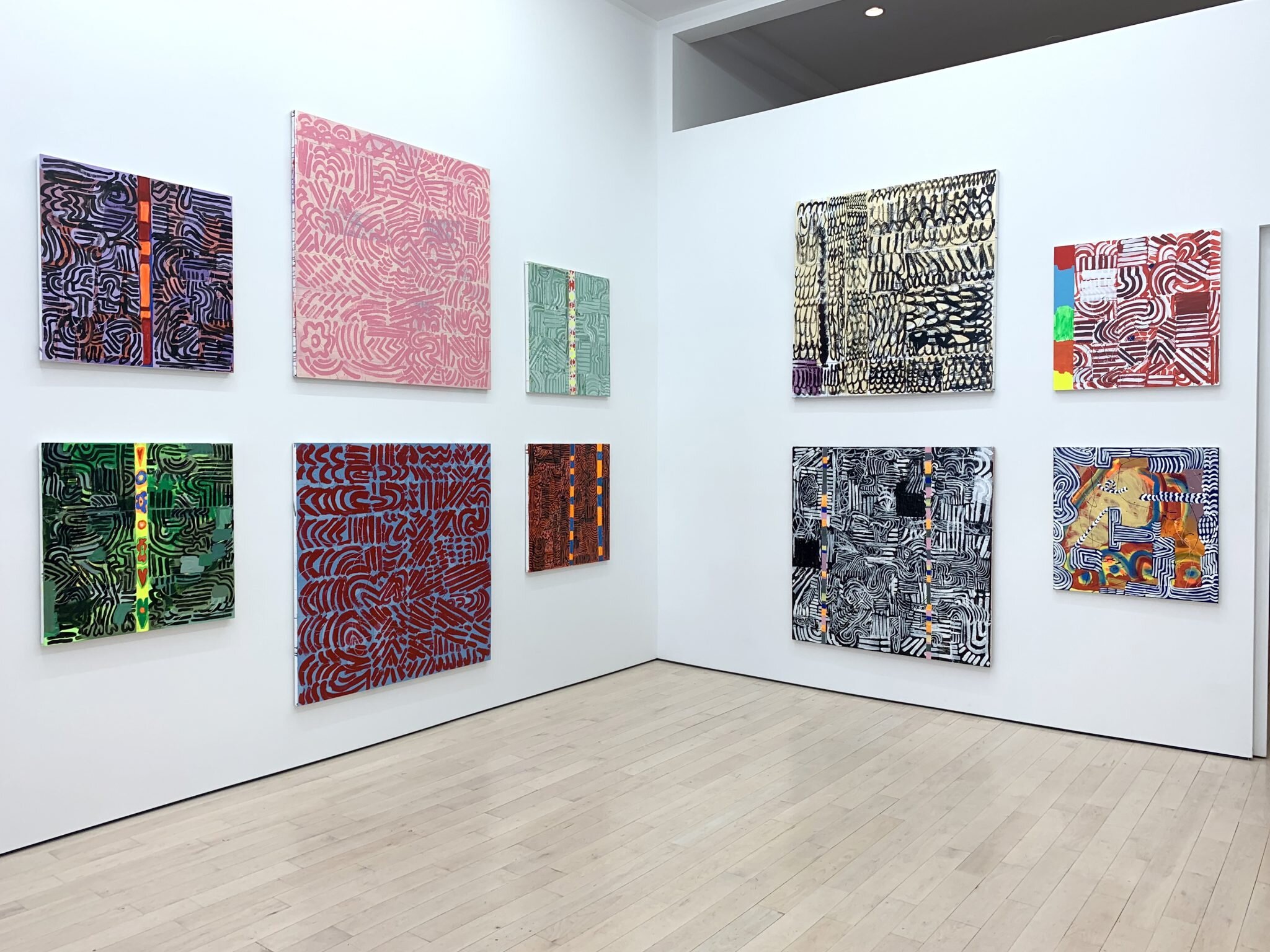Pam Glick’s code theory
Pam Glick, installation view
Pam Glick, installation view
Originally Published by Two Coats of Paint
Contributed by Jason Andrew
Artists often have generative strategies for jumpstarting a work. The AbExers’ had their automatism and the minimalists had their procedural arrangements. For her new paintings, on display at The Journal Gallery in their rotating “Tennis Elbow” series, Pam Glick seems to embrace both the automatic and the procedural.
I’m a huge fan of the sci-fi action film The Matrix. When Keanu Reeves’ character Neo begins to intuitively translate the binary numeric system cascading down a post-apocalyptic computer screen, the film gains momentum. Staring intensely at Glick’s paintings I found a way into her work—by thinking about code theory.
Glick has been celebrated for her “improvisational flair,” and for many years her paintings have been compositionally based on a matrix. Densely painted, the new paintings incorporate painted marks that are sectioned into rows that generate linear combinations. Through multiple works, there is a single band of painted information uniquely chroma-keyed to the surrounding fields. This single vertical row space serves as a generator-matrix, driving the narrative of a given painting towards a final resolution. As in The Matrix, these bands seem to reference the “real world” as distinct from a controlled and regulated one – privileged moments of consciousness within Glick’s matrix.


